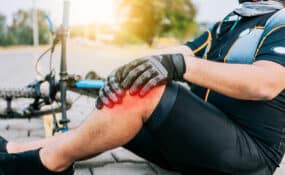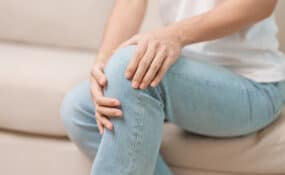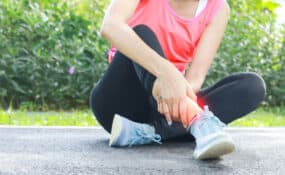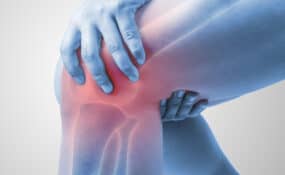
When the temperatures drop, many people notice a sudden increase in their joint and muscle pain. It’s not just in your head – there’s a scientific reason behind why it happens. In this blog, we’re diving deep into understanding why the cold weather may exacerbate joint and muscle pain, more importantly, how you can combat it. Let’s get started.
More Posts Like This From Intecore:
Beat the Cold: Managing Joint Pain and Stiffness Effectively
Injury Prevention – A Physical Therapist’s Guide
Six Ways to Make the Most Out of Your Physical Therapy Visits
Table of Contents
Understanding Joint and Muscle Pain in Cold Weather
It’s the season of festive holidays, cozy sweaters, and for many, the dreaded flare-up of joint and muscle pain. As a physical therapist, I’ve encountered countless patients who’ve walked through our doors with complaints of discomfort during the colder months.
So, why does this happen? Research suggests that barometric pressure drops in cooler weather, which can cause joints to expand and result in pain. Additionally, cold temperatures may increase the viscosity of the synovial fluid that lubricates joints, making them feel stiffer. Not to mention, muscles tend to tense up in the cold, making them more susceptible to strains and injuries. But fret not! While the chilly climate may pose its challenges, there are effective strategies and treatments to help you navigate the colder months with less pain.
Tips for Relieving Joint and Muscle Pain
1. Stay Active
One of the best ways to combat joint and muscle pain during the colder months is to stay active. While it may be tempting to snuggle under a blanket and avoid the cold, maintaining a regular exercise routine can significantly help. Physical activity increases blood circulation, which warms up the body and helps keep joints fluid. Furthermore, strengthening exercises target the muscles surrounding joints, offering added support. Even simple activities like brisk walking, indoor aerobics, or joining a yoga class can make a world of difference in keeping pain at bay.
2. Dress Warmly
When venturing outside or even inside a chilly home, dressing warmly can prevent your muscles from tensing up due to the cold. Opt for loose, comfortable layers that trap body heat. Special attention should be given to areas where you experience the most pain. For instance, if your knees tend to feel sore, consider wearing thermal leggings or knee warmers.
3. Use Heat Therapy
Heat therapy is a tried-and-true method for alleviating muscle and joint pain. Applying warmth to sore areas can help relax and loosen tissues, thereby reducing pain. Consider using hot packs, warm towels, or heating pads for targeted relief. Taking a warm bath with Epsom salts can provide widespread relaxation and relief too..
Preventive Measures to Reduce Joint and Muscle Pain
1. Stay Hydrated
It’s easy to forget to drink water when the temperature drops, but staying hydrated is vital for joint and muscle health, and not drinking enough can be one of the causes of muscle and joint pain. Water helps maintain the lubrication of joints and can also reduce muscle cramps. Moreover, hydrated muscles can respond better to challenges, reducing the chance of strains and discomfort.
2. Maintain a Healthy Diet
Your diet plays a significant role in the health of your joints and muscles. Incorporating foods rich in omega-3 fatty acids, like salmon and walnuts, can reduce inflammation. Foods high in antioxidants like berries, spinach, and nuts can also combat inflammation and muscle soreness.
3. Stretch and Exercise Regularly
While it might be tempting to reduce physical activity during colder months and stay inside, it’s essential to keep your body moving. Regular stretching and exercise can prevent stiffness and reinforce muscle strength, both of which protect your joints. Tailor your exercises to your needs, and if you’re unsure about which exercises are suitable, consult with a physical therapist to create an individualized program that promotes joint and muscle health.
Alternative Therapies for Joint and Muscle Pain Relief
1. Acupuncture
Originating from traditional Chinese medicine, acupuncture involves inserting fine needles into specific points on the body to stimulate the body’s natural healing processes and release endorphins – our natural painkillers. Many individuals have found relief from joint and muscle pain through acupuncture, especially when conventional methods haven’t provided adequate relief.
2. Massage Therapy
Massage isn’t just for relaxation; it’s also a therapeutic tool for joint and muscle pain. By targeting tension-filled muscles and stimulating soft tissues, massage therapy can increase blood flow, reduce muscle stiffness, and alleviate pain. Regular massage sessions during the colder months can keep muscles flexible, improve circulation, and promote overall well-being.
3. Physical Therapy
As a physical therapist, I can’t emphasize enough the benefits of physical therapy for joint and muscle pain. Physical therapy offers tailored exercises and interventions to strengthen muscles, improve flexibility, and restore function. For those struggling with pain exacerbated by cold weather, a physical therapist can provide guidance on effective exercises, techniques, and strategies to alleviate discomfort and enhance mobility.
Final Thoughts on Managing Joint and Muscle Pain in the Cold
Colder weather shouldn’t mean a season of discomfort and pain. With the right approaches and preventive measures, you can navigate through the colder months with ease and less pain. From staying active and dressed warmly to exploring alternative therapies like acupuncture and physical therapy, there are many ways to address cold induced pain head-on.
Ready to Get Relief For Joint Pain?
If you’ve found this blog helpful and are eager to get the help you deserve we invite you to take the next step with us. To find out more, click here to fill out this form and tell us more about what’s going on, and our team will be in touch. You can also give us a call here: 949-565-4944
- Why Regular Body Maintenance is Crucial for Long-Term Health - April 21, 2024
- 3 Things Aggravate Knee Pain After Biking and How to Ease It - April 14, 2024
- Runners Knee Stretches: Top 5 Stretches Every Runner Needs to Know - April 7, 2024














